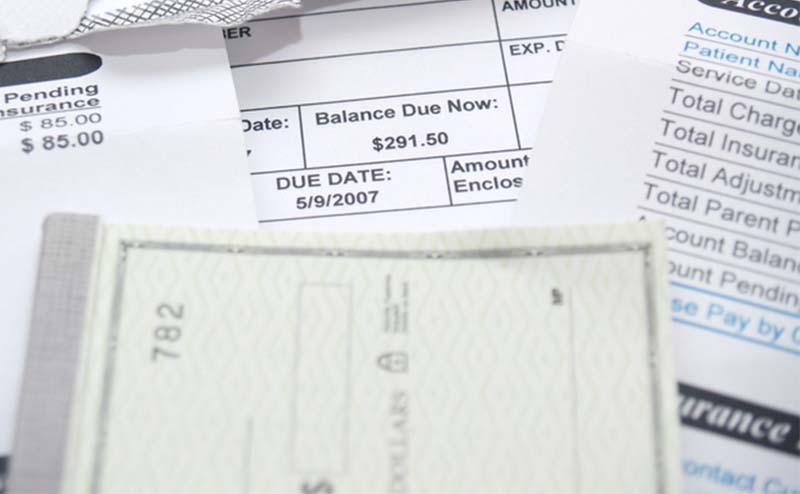As many of you already know, last week, the Departments of Health and Human Services (HHS), Treasury, and Labor (the Departments) and the Office of Personnel Management (OPM) issued an interim final regulation (IFR) implementing part of the No Surprises Act. This second IFR mainly focuses on the federal independent dispute resolution (IDR) process.
ACEP’s full summary of this reg is available here, and while I could use this post to highlight all the key policies in the reg, there is one major issue I want to focus on. We (along with most of the provider community) are extremely concerned with how much weight the reg has given to what’s called the qualified payment amount (QPA) in the IDR process.
The QPA was defined by Congress in the No Surprises Act as the median contracted rate for a given service in the same insurance market in a specific geographic area. It is used for two purposes: to determine cost-sharing for patients for out-of-network services, and as one of the factors an arbiter can use to choose between the offer submitted by a health plan and the offer submitted by a provider. With respect to the IDR process, other factors listed out in the No Surprises Act that the arbiter must consider can include:
- The level of training, experience, and quality and outcome measurement;
- Market share held by the provider or facility or the plan or issuer;
- Patient acuity or the complexity of the service;
- Teaching status, case mix, and scope of services of the nonparticipating facility; and
- Previous contractual relationships (demonstrations of good faith efforts (or lack thereof) made by the providers or the health plan to enter into network agreements and contracted rates between the provider and the health plan.)
There are also certain factors an arbiter cannot consider, including usual and customary charges, the amount that would have been billed by a provider or facility if the services were not subject to a prohibition on balance billing, and payment or reimbursement rates payable by a public payor, including Medicare, Medicaid, the Children’s Health Insurance Program (CHIP), and Tricare.
Since the QPA sets the cost-sharing amount for patients, the Departments established a methodology for calculating QPAs in the first IFR that will set artificially low amounts—which will not reflect market rates. Thus, ACEP and the Emergency Department Practice Management Association (EDPMA) specifically requested in our comments on the first IFR that the Departments avoid making the QPA the primary consideration of arbitration during the IDR process and instead keep it equally weighted with other factors—which is how Congress intended it under the No Surprises Act.
However, the Departments did the exact opposite— they made the QPA the presumptive factor! Under the IFR, while arbiters must still consider the other factors listed in the statute, a party in the dispute (a provider or health plan) must provide “credible information” to the arbiter related to those factors that clearly demonstrates that the QPA is “materially different” from the appropriate out-of-network rate. Otherwise, the arbiter must select the offer closest to the QPA.
ACEP believes that this approach is a clear violation of Congressional intent (as do even members of Congress themselves!). We and many others worked hard to ensure a final bill in Congress with a robust IDR process that required arbiters to consider equally a range of factors when making their determinations. The wording of the No Surprises Act was specifically designed to avoid making the QPA the de-facto benchmark amount for out-of-network services—but unfortunately the regulation will likely lead us down that path. In all, we believe that this approach will lead to narrower provider networks and lower reimbursement rates-- which will eventually significantly impact access to care. It will also cause many small emergency physician groups to go out of business, resulting in more provider consolidation (and, ironically, higher health care costs, something the Departments purported in the IFR to be trying to lower by using this aggressive approach).
The justification provided by the Departments in the reg for going down this route is particularly disappointing and includes arguments that are misleading and accusatory in tone. Further, the Departments do NOT fairly and accurate describe the root cause of surprise medical billing, leading them to implement a policy that benefits health plans at the expense of health care providers.
So, let me break down the Departments' rationale for this policy and point out the flaws in their troubling arguments.
Argument #1: The QPA should be considered first since it represents a “reasonable market-based payment for relevant items and services.”
To state without any qualifications that the QPA is a reasonable market-based payment for services is false. As referenced earlier, in the first IFR, the Departments made a number of methodological decisions around the calculation of the QPAs to keep them artificially low, since QPAs are also used to determine a patient’s cost-sharing amount. For example, the first IFR requires health plans to exclude risk sharing, bonuses, or penalties, and other incentive-based and retrospective payments or payment adjustments when calculating median contracted rates. We believe that this decision will lead to inaccurate QPAs that are significantly lower than the actual prevailing market rate and full payment for the applicable service. In some contracts, risk-sharing amounts can total 10 to 15 percent of total payments and the underlying fee schedule amount is adjusted downward to reflect the potential for earning such an incentive.
Another methodological issue that we had concerns with is the decision to set each contracted rate as a single data point when calculating a median contracted rate. Under the first IFR, the rate negotiated under a constitutes a single contracted rate regardless of the number of claims that were paid at that contracted rate. We had explicitly recommended a different approach to the Departments for calculating the median contacted rate. Specifically, we had requested that the Departments base the rate on the total number of actual payments issued to individually contracted physicians by that health plan. By basing the contract on individual claims rather than contracts, the QPA would more accurately reflect the actual negotiated rates between payors and providers. Instead, the Departments’ chosen approach will cause the QPA to not be representative of prevailing market conditions. It artificially sets a new standard that is determined by a payor’s broad (or narrow) contracting experience, irrespective of the frequency of use or applicability of those contracts in the market.
Argument #2: The statutory text lists the QPA as the first factor that the arbiter must consider in determining which offer to select. This specific ordering makes the QPA the primary factor that an arbiter should consider.
While the No Surprises Act does list the QPA first, the statute does not in any way state that the QPA should be prioritized over the additional factors that are listed. And really, for any list of items, something will always have to be first!
The Departments also claim that because the additional factors are listed in a separate paragraph, they are somehow secondary to the QPA. Again, the statute does not differentiate how the arbiter should consider the QPA versus the other factors. Rather, it simply states that the arbiter “shall” consider all these factors when determining which offer to select during the IDR process.
Argument # 3: Since the additional factors are secondary to the QPA, the arbiter must select the offer closest to the QPA, unless the credible information submitted by the parties clearly demonstrates that the QPA is materially different from the appropriate out-of-network rate, based on the additional circumstances with respect to the qualified IDR item or service.
The statute does not require parties to use the additional factors solely as a means for proving why the QPA should not be the presumptive out-of-network rate. Rather, as written, the statute allows for each factor to carry its own (equal) weight, and the arbiter must come to its decision after carefully considering the validity of all the information related to these factors that parties put forward.
Argument # 4: The statute sets out detailed rules for calculating the QPA, suggesting that an accurate and clear calculation of the QPA is integral to the application of consumer cost-sharing and to the arbiter’s determination of the out-of-network rate. Further, the cost-sharing is based off of the QPA for services eligible for the Federal IDR process, indicating that the QPA is a reasonable out-of-network rate.
ACEP agrees that the No Surprises Act does include detailed instructions about how to calculate the QPA, and that it is important to have accurate QPAs—since they are used to determine a patient’s cost-sharing amount and are one of the factors the arbiter can evaluate. I don’t think anyone would dispute that!
However, to go a step further and argue that having specific rules around the QPA in the No Surprises Act gives the QPA primacy in the IDR process simply has no merit. That’s just not how legislation works.
In addition, just because cost-sharing is based off the QPA doesn’t mean that the QPA is a “reasonable” out-of-network rate. It was clear from the first IFR that the Departments’ primary goal was keeping cost-sharing low— and, by doing so, the Departments automatically ensured that the QPA would NOT be an accurate representation of prevailing market rates for specific clinical services.
Argument # 5: Health plans must provide specific information on how the QPA is calculated to providers, ensuring that they (the providers) are aware of how this amount is calculated.
The Departments imply here that because health plans are required to provide information related to the QPA to providers, that the QPA is a transparent amount that both parties can fully understand. This is misleading on multiple levels.
First, the Departments are not correct when they state that plans have to inform providers about how the QPA was calculated. While it’s true that health plans are required to provide information about the QPA to providers, that information does NOT include many details about the specific components of the QPA that can help providers understand how it was calculated. In the first IFR, the Departments require health plans to provide the following information to providers along with each initial payment or notice of denial of payment:
- The QPA for each service involved.
- A statement certifying that each QPA was calculated based on the methodology outlined in the IFR.
- A statement that a provider or facility can initiate a 30-day negotiation for purposes of determining the amount of total payment and that if the 30-day open negotiation period does not result in a determination the provider or facility may initiate the IDR process within 4 days after the end of the open negotiation period. The plan must also provide contact information for the appropriate office or person to initiate open negotiations.
- Upon request (emphasis added) of the provider or facility, information about whether the QPA includes contracted rates that were not set on a fee-for-service basis, and if so, how the QPA was calculated.
- Upon request (emphasis added), a statement that the plan’s contracted rates include incentive or other payments that were excluded for purposes of calculating the QPA.
In our comments on the first reg, we stated that the degree of disclosure regarding the QPA is severely deficient as a means for identifying potential abuses or for providing important context in both the negotiation and arbitration frameworks. We requested that health plans provide a significant amount of additional information, including details about how the QPA was specifically calculated.
Thus, under the current rules, the QPA still really is not a transparent amount. And, speaking of the lack of transparency, without having detailed information about how the QPA is calculated, it will be extremely difficult for providers to present “credible information” about any of the other factors to the arbiter to successfully dispute the validity of the QPA. Health plans will now always have the upper hand in negotiations, since only they have access to the underlying data and information that are used to determine QPAs—and therefore can use those data to dispute any credible evidence that a provider tries to put forth in IDR.
I cannot overstate how much this information discrepancy puts providers at a disadvantage in the IDR process. Let me use the example of downcoding to illustrate this point. In this second reg, the Departments acknowledge that health plans downcode claims and that in these cases, a provider can argue that the QPA does not reflect the acuity of the service delivered during the IDR process. Suppose a provider bills an emergency department (ED) evaluation and management (E/M) level 4 service and the health plan downcodes the claim to an ED E/M level 3 service—the QPA the health plan would put forth would be for an ED E/M level 3 service. Only the health plan has what would be the specific QPA for an ED E/M level 4 service, but they are not required to share it under the IFR. Without this information, what other credible information could providers give to arbiters to help them with their decision? Further, how would a provider reasonably expect to make an offer that was closest to the QPA for a level 4 service? In our comments on the first IFR, we stated that it was extremely important for health plans to provide clinicians with the QPA for the billed service if the claim was downcoded and the QPA selected was based off of a different code. If providers don’t have access to that information, it will be difficult or maybe even impossible for providers to be successful in the IDR process for downcoded claims.
Argument #6: The QPA should reflect standard market rates arrived at through typical contract negotiations and should therefore be a reasonable out-of-network rate under most circumstances. The QPA is generally based on the median of contracted rates, and these contracted rates are established through negotiations between providers and facilities and plans and issuers.
The Departments state here that because QPAs are the median contracted rates for specific services (which are rates that are negotiated between health plans and providers) that they therefore reflect standard market rates. In many cases, a contracted rate doesn’t actually reflect the market rate in a particular geographic area. Contracted rates are impacted by a number of factors, including the market share of the health plan and the provider and penalty and bonus structures that are built into contracts. Providers can agree to lower rates in exchange for the reimbursement certainty and administrative efficiencies that come along with being in the health plan’s network. In other words, given the complexity of contract negotiations and the various factors that impact the final contracted rates, it is very misleading to definitively state that contracted rates represent reasonable out-of-network rates.
Argument #7: Anchoring the determination of the out-of-network rate to the QPA will increase the predictability of IDR outcomes, which may encourage parties to reach an agreement outside of the Federal IDR process to avoid the administrative costs and will aid in reducing prices that may have been inflated due to the practice of surprise billing prior to the No Surprises Act. In addition, anchoring the determination to the QPA will help limit the indirect impact on patients that would occur from higher out-of-network rates if plans and issuers were to pass higher costs on to individuals in the form of increases in premiums.
This may be the most problematic set of assertions of them all. First, the Departments state that selecting the QPA will reduce “prices that may have been inflated due to the practice of surprise billing prior to the No Surprises Act.” Throughout the reg, the Departments blame the practice of surprise billing exclusively on providers and repeatedly state that providers choose to be out-of-network in order to charge higher prices at the expense of patients. In fact, the reg specifically calls out the role of emergency physicians and the Emergency Medical Treatment and Labor Act (EMTALA)—arguing that because of emergency physicians’ legal obligation under EMTALA, and the inability of patients to make treatment decisions (including by selecting providers) in emergency settings, there are fewer incentives for emergency providers to contract with health plans. The Departments don’t really acknowledge the role that health plans play in causing this market failure. In our experience, the EMTALA obligation actually causes health plans to be less likely to keep emergency providers in-network. The plans recognize that their policyholders are able to access emergency care regardless of insurance status or ability to pay, and therefore have no real incentive to enter into fair contracts with emergency physicians beyond what poorly defined or enforced state network adequacy requirements might exist. Further, due to the higher deductibles most health plans set for out-of-network care (often double the deductibles for in-patient care!), health plans actually are saving money when a patient’s emergency care is out-of-network—because the patient is on the hook for most, if not all, of the emergency bill from their own pocket before the insurance company ever has to kick in any money. We have repeatedly heard of cases where health plans are cancelling contracts, forcing emergency physician groups to go out-of-network. This pattern has only gotten worse over the last couple of years. It is truly unfortunate that the Departments are blaming emergency physicians and other providers for this problem and establishing policies based on this extremely biased assessment.
Lastly, the Departments use the common line taken from the insurance industry’s playbook that increasing payment rates to providers could result in higher premiums. Health plans love to use the threat of higher premiums to obtain their preferred policy outcome. In the same breath, health plans also like to claim that if payment rates fall, they will pass those savings along to enrollees in the form of lower premiums. However, when have you ever seen health plans decrease premiums? It is simply too bad that the Departments are buying into this false narrative used by insurers. And what is even sadder is that that the Departments themselves don’t even conclude that the reg will decrease premiums. Towards the end of the rule, the Departments actually state that they are unable to estimate the impact the reg will have on premiums and don’t know whether premiums will increase or decrease as a result of the policies included in the reg.
As you can see, there are numerous misleading assertions that we have to work on addressing in the reg, which lead to a very poor policy choice that will lower reimbursement rates, narrow networks, and impact patients’ access to care. While the reg is an interim final reg, meaning that it is effective immediately, there is a 60-day comment period, and ACEP—working with EDPMA— will definitely be submitting comments. We are also working with the American Hospital Association, American Medical Association, other hospital-based specialties, Congressional Committee staff, and directly with several members of Congress, all of whom are very concerned, to coordinate our advocacy strategy. In addition, we have been in touch with the Administration to voice our strong disappointment.
Finally, we have flagged the impact this reg will have on emergency care and small groups in particular to the NY Times and issued this statement opposing the rule.
If you have questions about the rule, ACEP is hosting a townhall on October 14 at 2:30 pm EST (click here to register). As well, you can visit the ACEP Advocacy Action Center to take action and urge your legislators in Congress to tell the Administration they need to fix this regulation to stay in line with Congress’ intent on the No Surprise Act.
I will also keep you all updated as all our advocacy efforts continue!
Until next week, this is Jeffrey saying, enjoy reading regs with your eggs.






